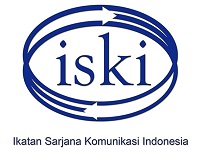Analisis Etika Komunikasi Film Animasi Syamil Dodo Sebagai Konten Edukasi Islam
DOI:
https://doi.org/10.31949/jika.v5i1.4131Abstract
Various digital media can be used as a means of communication, one of which is the production of animated films used to convey educational messages on Islamic topics. During the production process of a film with Islamic content, certain points must be taken into account so that the content can be maintained in accordance with the only applicable rule of communication ethics in Islam. The purpose of this study is to analyze the communication messages included in the animated series "Syamil Dodo", a series of joint prayers, and the application of the Islamic ethics of communication as a research topic. The type of research used is descriptive qualitative research using a pragmatic approach. The study design used was a content analysis using observation tools with documentation. As a result of this study, it was found that the animated film "Syamil Dodo" contains Islamic educational values that are understandable to children, and that the use of communication ethics mainly follows Islamic teachings. Ethics is very important in communication. Every word you communicate can affect every action and every action. The researcher explains that the results of this analysis are the results of an in-depth study of the application of communication ethics included in educational content.





